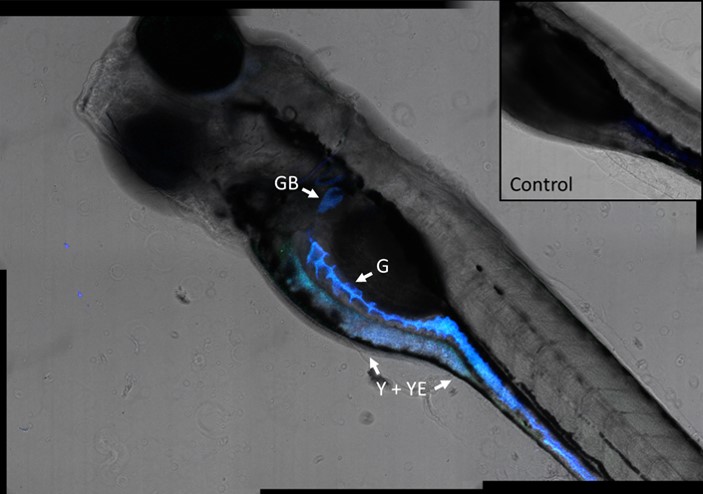 At least 60% of the most commonly used chemicals in industrial applications are thought to cause baseline toxicity in an aquatic environment. Baseline toxicity is the potential of a chemical to cause adverse effects due to its lipophilic nature, since lipophilic chemicals accumulate in cellular membranes and disrupt their function leading to impairment of essential cell functions. Since the biological function of membranes is vital to the survival of all species, this is a highly relevant toxicity mechanism across aquatic organisms including fish. In addition to baseline toxicity, many of these lipophilic chemicals can trigger other specific toxicity pathways, for instance disruption of endocrine pathways.
At least 60% of the most commonly used chemicals in industrial applications are thought to cause baseline toxicity in an aquatic environment. Baseline toxicity is the potential of a chemical to cause adverse effects due to its lipophilic nature, since lipophilic chemicals accumulate in cellular membranes and disrupt their function leading to impairment of essential cell functions. Since the biological function of membranes is vital to the survival of all species, this is a highly relevant toxicity mechanism across aquatic organisms including fish. In addition to baseline toxicity, many of these lipophilic chemicals can trigger other specific toxicity pathways, for instance disruption of endocrine pathways.
The most important question is which of these pathways are the critical drivers of toxicity and thus most important in determining the adverse outcome in a real-life situation. Examples of compounds that are present in the environment and that can trigger multiple mechanisms of toxicity include brominated flame retardants that are widely used to inhibit flammability of products such as electronics, clothes and furniture, bisphenols that are used for the production of plastics, and phthalates that are added to plastics to increase flexibility.
In pharmacology the concept of drugs targeting multiple biological targets is called polypharmacology. It has been proposed that the toxicological equivalent, polytoxicology, would be introduced to deal with this issue. This project will use the zebrafish embryo as well as cell-based assays or chemical interaction assays (e.g., receptor binding, enzyme inhibition) to study chemicals with multiple mechanisms of toxicity and find ways to identify the critical pathways that lead to adverse effects. To this end exposures will be performed and endpoints that are indicative of different toxicity mechanisms (e.g., disruption of hormone levels, altered physiological function) will be determined.
